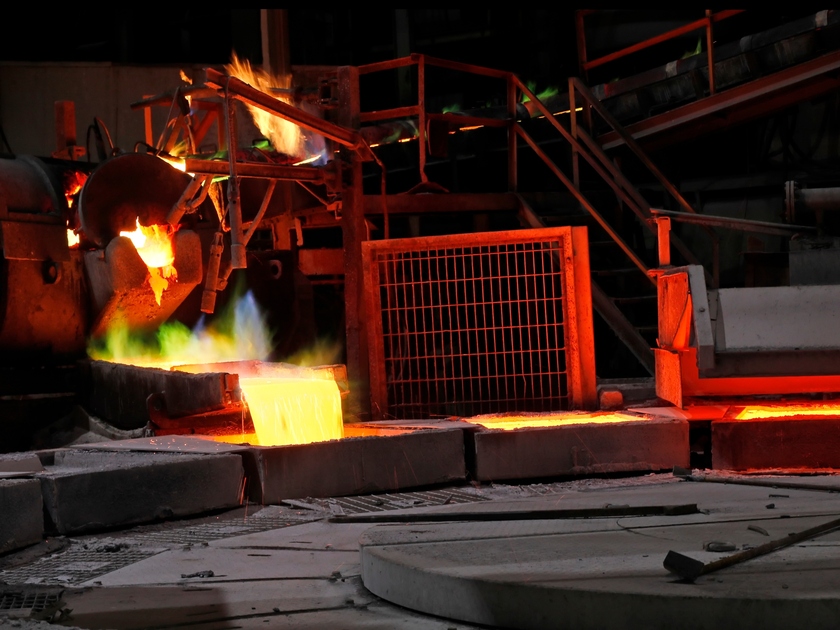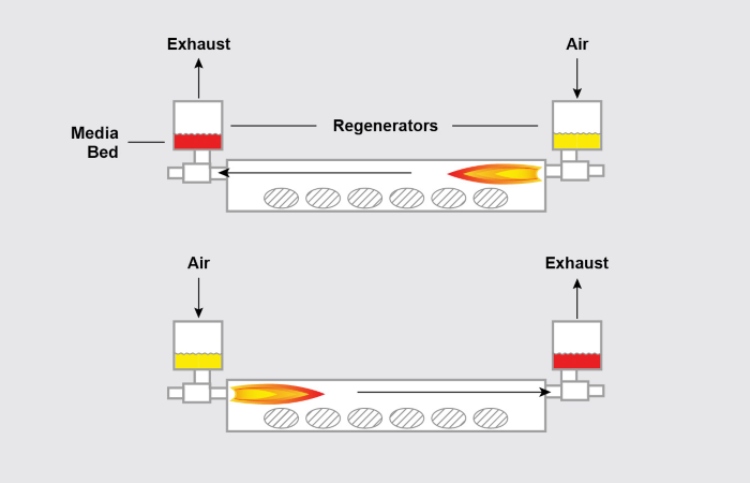Process heating is a major energy user in many industrial facilities. For plant managers looking to cut operating costs, process heating presents a great opportunity. Recovering waste heat and using it to preheat combustion air is one of the best ways for process heaters to improve efficiency and save on energy costs.
Recovering waste heat
The source of the heat energy is the exhaust gas stream, which leaves the process at elevated temperatures. A heat exchanger, placed in the exhaust stack or duct work, can extract a large portion of the thermal energy in the flue gases and transfer it to the incoming combustion air. Recycling heat this way will reduce the amount of purchased fuel needed by the furnace.
The amount of fuel savings from preheating combustion air will vary among different process temperatures. Generally, the higher the process temperature, the higher the potential savings.
Many processes produce dirty or corrosive exhaust gases that will plug or attack heat exchangers. Some exchangers are more resistant to these conditions than others, so if your process isn't clean, investigate all the available options. When discussing it with potential vendors, be sure to have a detailed analysis of the troublesome materials in your exhaust gas stream.
Types of heat exchangers
There are two types of air preheaters — recuperators and regenerators.
Recuperators are gas-to-gas heat exchangers placed on the furnace stack. Internal tubes or plates transfer heat from the outgoing exhaust gas to the incoming combustion air while keeping the two streams from mixing. Recuperators are available in a wide variety of styles, flow capacities and temperature ranges.
Regenerators include two or more separate heat storage sections. Flue gases and combustion air take turns flowing through each regenerator, alternately heating the storage medium and then withdrawing heat from it. For uninterrupted operation, at least two regenerators are required. One regenerator is needed to fire the furnace while the other is recharging.
What's the payback?
Process temperature provides a rough indication of where air preheating will be cost effective. Processes operating above 1600°F are generally good candidates, while preheated air is difficult to justify on processes operating below 1000°F. Those in the 1000°F to 1600°F range may be good candidates but must be evaluated on a case-by-case basis.
These guidelines, however, aren't set in stone. Financial justification is based on energy savings rather than on temperature differential. If a low temperature process has a high enough exhaust gas flow, energy savings may justify the installation costs.
Use the Process Heating Assessment and Survey Tool (PHAST) available in the U.S. Department of Energy's MEASUR platform to evaluate the cost effectiveness of heat recovery and other process heating savings opportunities.


